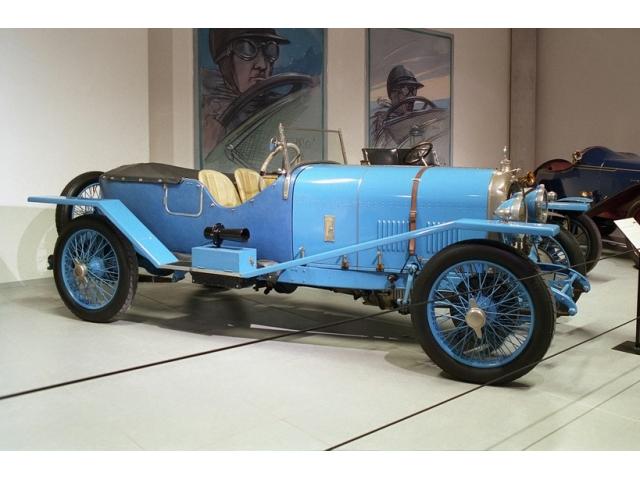1923 Chenard et Walcker 3.0-Litre 70/80hp Phaeton
- Brand: Chenard et Walcker
'Le Mans' has become a mythical name whereas the French marque Chenard et Walcker appears to have been largely forgotten. Nevertheless, it was a Chenard et Walcker of the type offered here that won the very first 24-hour race at Le Mans in 1923.
Chenard Walcker (Chenard et Walcker after 1906) was founded in Asnières, Seine in the late 1890s by railway engineer Ernest Chenard and mining engineer Henri Walcker, initially making De Dion-style tricycles before moving on to car manufacture in 1900. Chenard Walcker's first four-wheeler was powered by a twin-cylinder engine of the company's own design, which drove the rear wheels via an unusual double axle, an arrangement that lasted into the 1920s. Marine engines were added to the firm's portfolio and in 1905 Chenard Walcker produced 400 cars, becoming a Société Anonyme (public company) in March 1906 and moving to a new factory at Gennevilliers. The company grew, partly thanks to a substantial order for Paris taxis, and by 1914 had risen to become France's ninth largest motor manufacturer. Chassis made from reinforced wood were used up to 1907 when steel was adopted, and from 1906 onwards four-cylinder models predominated. Chenard et Walcker favoured sidevalve engines of 'T'-head layout up to 1910, after which they were phased out in favour of the more efficient 'L'-head type.
Chenards of the early post-WWI years were somewhat old fashioned but in 1922 the firm launched a new model powered by a 3.0-litre overhead-camshaft four designed by Henri Toutée. The company's Le Mans winning entry was driven by two of its engineers – René Leonard and André Lagache – who circulated the 17.3-kilometre track at an average speed of 92.064km/h (57.2mph), covering a distance of 2,209.536 kilometres by the finish. Another Chenard et Walcker finished second while Bentley's first Le Mans entry, driven by Captain John Duff and Frank Clement, came home fourth.
By 1925 Chenard et Walcker was France's fourth largest motor manufacturer, producing 100 cars per day. It had links with several other French firms and in 1927 joined a consortium with Delahaye. This alliance lasted until 1931 when the two companies went their separate ways, but while Delahaye prospered Chenard struggled. In 1936 it was taken over by the coachbuilder Chausson. Cars continued to be produced up to the outbreak of war and again in 1946, after which Chenard concentrated on the manufacture of a light forward-control van before selling out to Peugeot in 1950.
| Specification | |
| Production Start | 1923 |
| Country of origin | France |






















